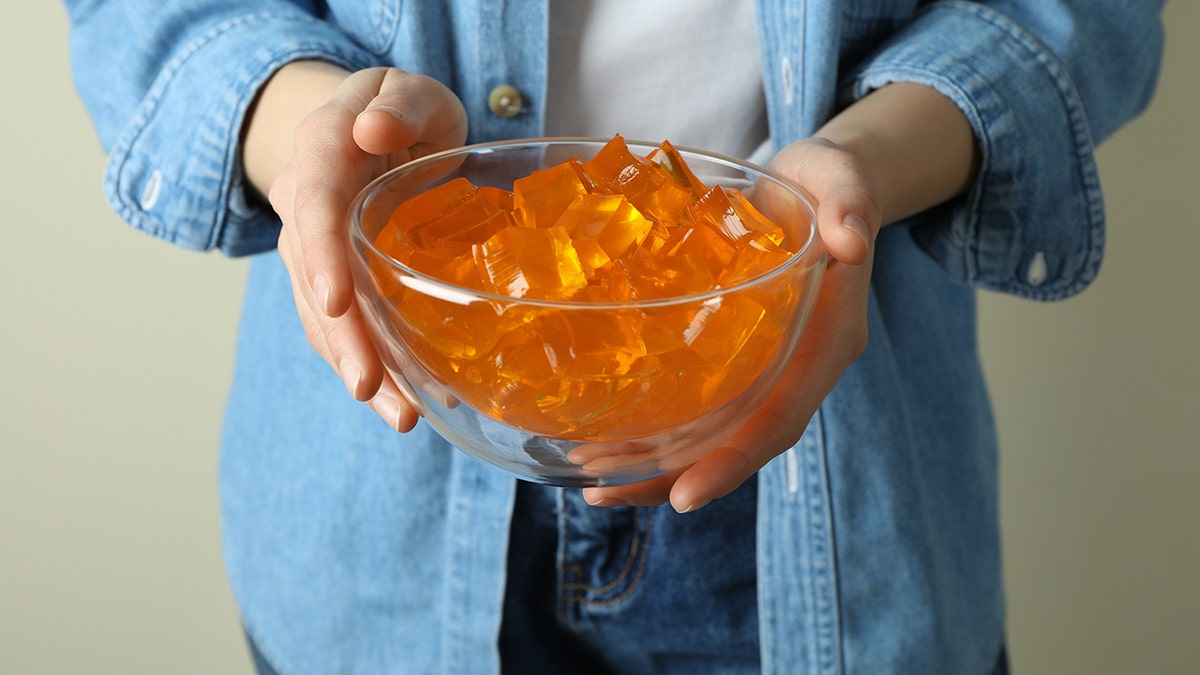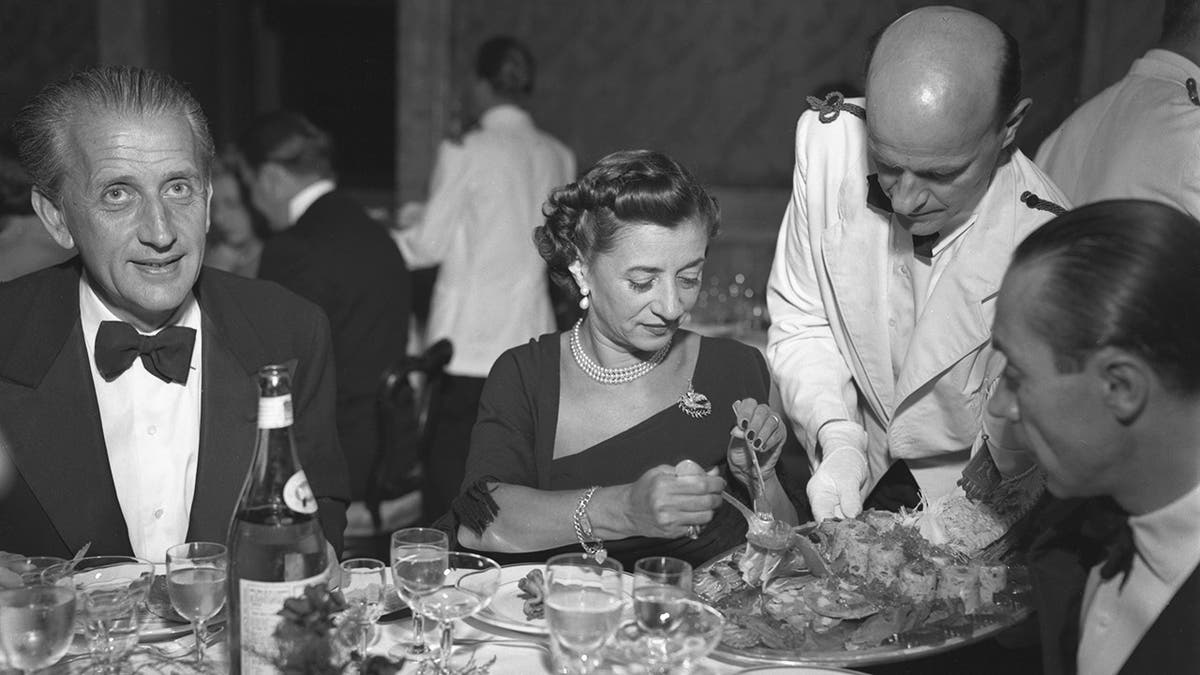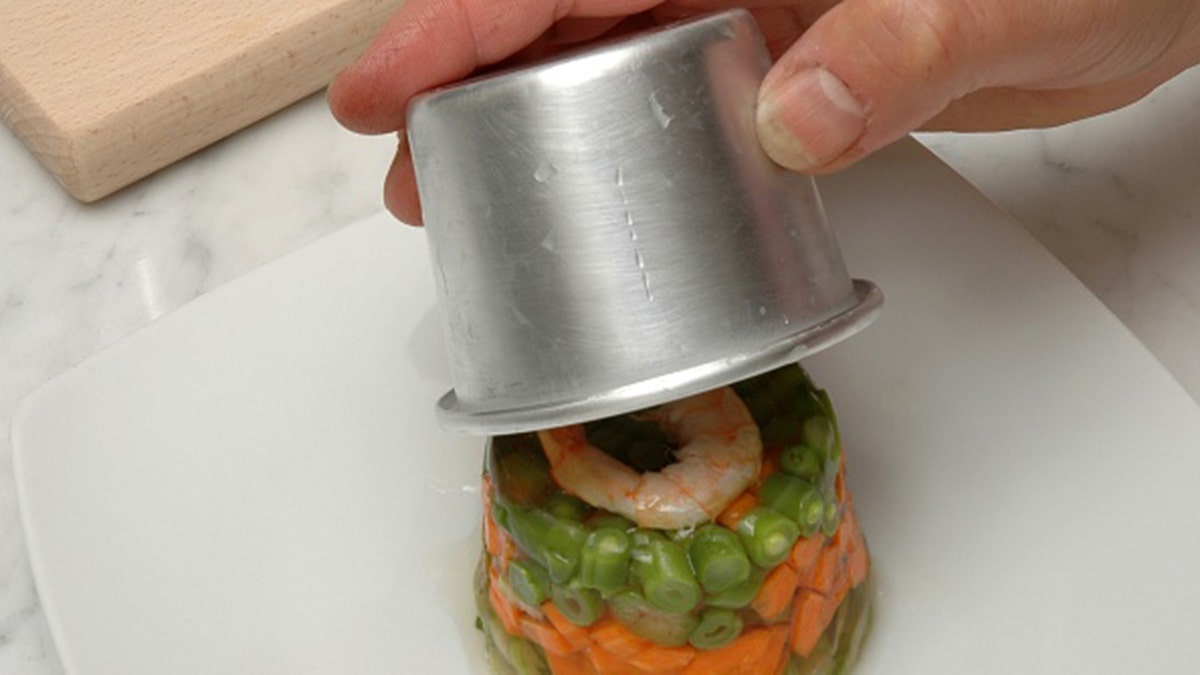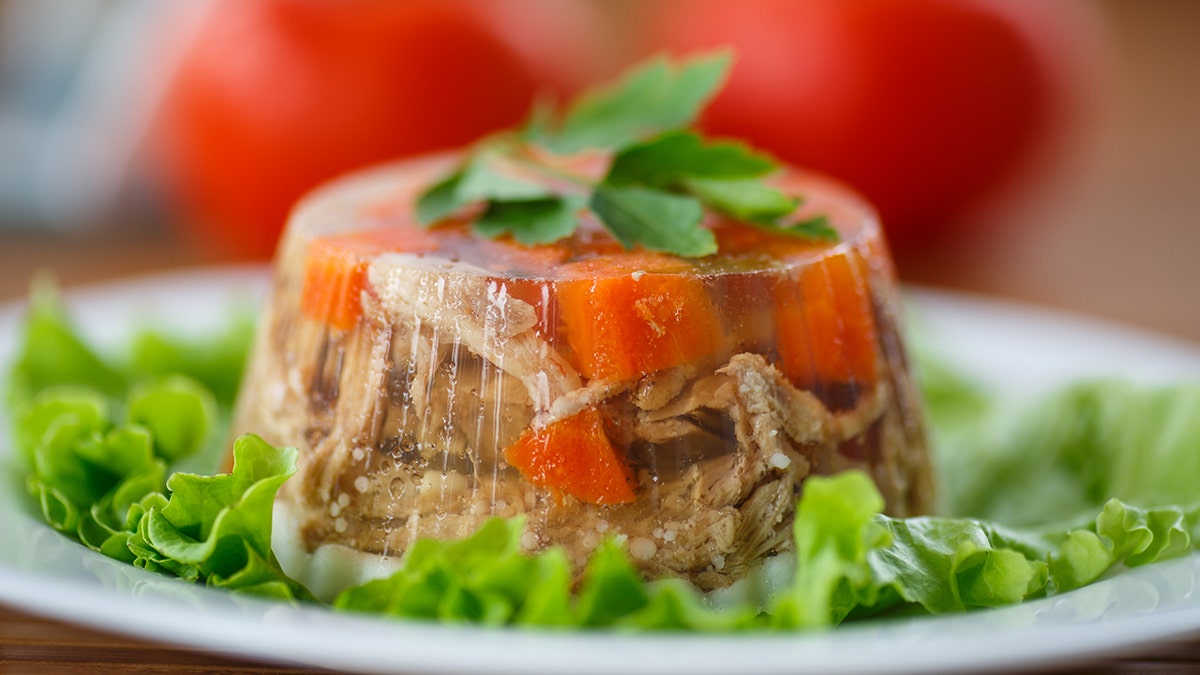NEWYou can now listen to Fox News articles!
The humble Jell-O salad and its savory ancestor, aspic, are shaking up American kitchens and even getting a glossy, fine-dining revival.
Aspic originally began in medieval kitchens as a way to preserve meat using collagen-rich broths that solidified into savory jelly; it later evolved into a mid-century American status symbol, thanks to pastel Jell-O molds.
But by the 1970s, it fell out of fashion — remembered mostly as an odd mix of mayonnaise, olives and hot dogs suspended in wobbling gelatin.
7 RETRO SALAD DRESSINGS THAT ONCE RULED AMERICA’S FRIDGES ARE MAKING A COMEBACK
“In the 1950s, gelatin dishes signified modernity, abundance and a hint of status tied to refrigeration and convenience,” Jessica Randhawa, a California chef and owner of the food blog The Forked Spoon, told Fox News Digital.
“Today, I view gelatin dishes as a novelty and a source of nostalgia, but also as a bridge back to collagen-rich stocks, rendered fats and cooking without seed oils,” she said.
She said the current fascination with aspics and Jell-O salads mirrors the revival of homemade bone broth and cooking with beef tallow.
“It is a return to texture, thrift and whole-ingredient techniques,” she said.
WHATEVER HAPPENED TO OLIVE LOAF, THE NOSTALGIC 1970S DELI MEAT THAT AMERICA ABANDONED?
In a recent thread on the subreddit r/Old_Recipes, users recalled family dinners featuring the dish.
“My paternal grandmother made this for every holiday meal,” one Reddit user wrote. “Hers also had green peas in it. It was a popular dish. I remember always looking at it and thinking it was so interesting to look at — but I would never try it.”

“I hated it,” another person said. The individual added, “I had to eat it.”
RETRO DINNERTIME FAVORITE IS TRENDING AGAIN, AND IT’S TAKING OVER AMERICAN HOMES
Some commenters, however, remembered it fondly.
“Loved my mom’s,” another user wrote. “She made hers with V8 juice, beef consommé, a little Worcestershire and a variety of green vegetables: chopped zucchini, green onions, green pepper, celery.”

Now, home cooks are reviving the trend on social media. They’re sharing Jell-O salads studded with marshmallows and fruit, and savory jelly creations packed with tomato, crab meat, clams, olives and even beef tongue — often topped with mustard or served alongside crackers.
TEST YOURSELF WITH OUR LATEST LIFESTYLE QUIZ
Chefs are bringing it back, too.
In London, chef Matthew Ryle reimagined the traditional French oeuf en gelée — egg in aspic — with rich stocks and soft-boiled eggs, as The New York Times recently reported. The dish has become so popular that his restaurant sells sweatshirts emblazoned with the French phrase.

For some, the aspic revival is as practical as it is nostalgic.
Australian chef Chris Yuille told the outlet that the jelly-like dishes use inexpensive, collagen-rich cuts that would otherwise go to waste.
His modern versions, which resemble glass sculptures showcasing vegetables and mousse, also serve as what he calls “tableside theater,” which might explain why the dishes are also a hit on social media.
As millennials and Gen X rediscover “grandma food” such as meatloaf, casseroles and Spam, the wave of nostalgia has made room for gelatin-based “food art” trending across TikTok, Instagram and Pinterest.
Shimmering aspic creations garnished with edible flowers have tapped into a growing fascination, especially with the texture. “In the West, the only textures we really like are crisp, tender, smooth and crunchy,” Yuille told the Times. “Jelly is kind of a spooky experience to us.”

The collagen-packed dishes can also carry skin and joint health benefits. These remained meals are common in French and Eastern European cooking, such as Polish jellied pig’s feet or Russian kholodets, and even appear in Chinese soup dumplings, according to Tasting Table.
CLICK HERE FOR MORE LIFESTYLE STORIES
Randhawa said making aspic is on her to-do list and would be a perfect use of her popular bone broth recipe.
“I would build it off a deeply seasoned, naturally jellied bone broth and treat it like a savory flavor-locking canvas rather than a sugar bomb like Jell-O,” she said.

“For me, an aspic today is equal parts flavor and texture, with just enough spectacle to feel special,” Randhawa added. “I would use my clarified bone broth as the base, add some apple cider vinegar or citrus for brightness, crisp vegetables and some seafood suspended for contrast.”
Even Jell-O isn’t letting the trend slip past.
To celebrate its 125th anniversary, the company is launching limited-edition “No Thanks” Thanksgiving molds that turn polarizing holiday staples like Brussels sprouts, cranberry sauce and pecan pie into colorful, jiggly desserts.
The tongue-in-cheek campaign taps not only into the retro food revival but also into 2025’s “playful food” trend, according to Food & Wine.
Read the full article here





![Adam Carolla and Joe Rogan Blast BBC for ‘Cooking’ Trump Speech to Push False Narrative [WATCH] Adam Carolla and Joe Rogan Blast BBC for ‘Cooking’ Trump Speech to Push False Narrative [WATCH]](https://www.boredtrashpanda.com/wp-content/uploads/2025/11/2025.11.15-09.52-boredtrashpanda-69184d5a98102.jpg)

![Austrian Climber Charged After Girlfriend Freezes Near Summit in Deadly Ascent [WATCH] Austrian Climber Charged After Girlfriend Freezes Near Summit in Deadly Ascent [WATCH]](https://www.lifezette.com/wp-content/uploads/2025/12/2025.12.07-07.26-lifezette-69352c4163d33.jpg)

![Biden’s FBI Was Not Incompetent, They Were ‘Competent at Corruption’ [WATCH] Biden’s FBI Was Not Incompetent, They Were ‘Competent at Corruption’ [WATCH]](https://www.lifezette.com/wp-content/uploads/2025/12/2025.12.05-10.56-lifezette-6932ba76203c5.jpg)


![GOP Challenger Addresses Walz’s ‘Elephant in the Room’ in Major Minnesota Fraud Scandal [WATCH] GOP Challenger Addresses Walz’s ‘Elephant in the Room’ in Major Minnesota Fraud Scandal [WATCH]](https://www.rvmnews.com/wp-content/uploads/2024/10/2024.10.28-09.52-rvmnews-67200797aa28f.jpg)